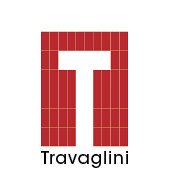Equipment
Since 1950, we have been the world's leader in the manufacturing of drying, smoking, and aging systems for cured meat
RAW HAM

SALAMI

SMOKED PRODUCTS

CHEESE

FISH

THAWING SYSTEMS

CLEAN ROOMS

Through the professional experience gained by our specialists, we are capable to satisfy any production request to design single machines or entire plants using the most advanced knowledge of technology and informatic.
 Raw Ham
Raw Ham
Salting room
The salting system is composed by ceiling mounted air exchangers and convectors made of ABS with conveyors that contain a hot water coil, installed in the centre or on the side walls of the room. As an alternative to this, however, there are some installations where it is possible to utilize a ventilated salting room, with special circular ducts and an air treatment unit. Temperature and relative humidity control are essential for proper absorption of sodium chloride. The salting period varies from 10 to 21 days according to the weight of the raw hams.

Curing room
This kind of equipment is specifically designed to operate at low temperature and relative humidity, allowing a gradual dehydration of the product and reducing the risk of crust formation. The curing period varies from 5 to 12 weeks according to the type of ham.

Pre-ageing room
This stage varies from 3 to 12 weeks and allows the product to be further dehydrated in order to guarantee that it can be safely stored.

Computerized system
Our computerized control and management system, in addition to monitoring temperature and relative humidity, allows:
- to set predefined programmes;
- to control the fluid temperature, optimizing shrinkage;
- to record the graphical trending of different variables and display on a single screen (temperature, relative humidity, etc.);
- to verify the exact progression of the entire maturing process.
Furthermore, to allow for various functions to be centrally supervised, we have designed a software program for this purpose that allows to monitor and manage system alarms, to collect and graphically displayed the rooms’ individual data, remote programming, remote support, and automatic centralised control for better management of energy consumption.
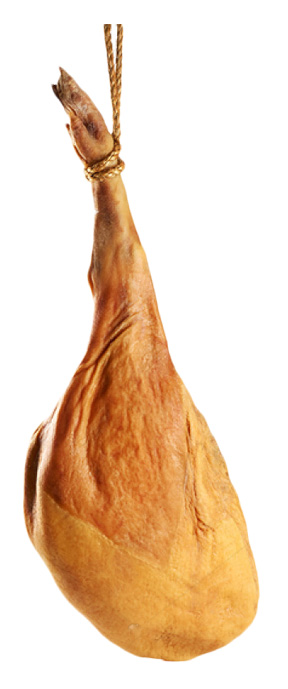
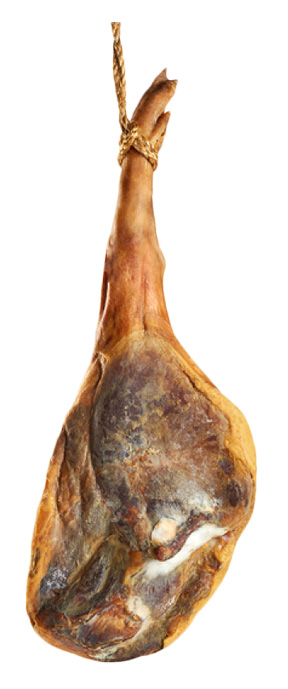
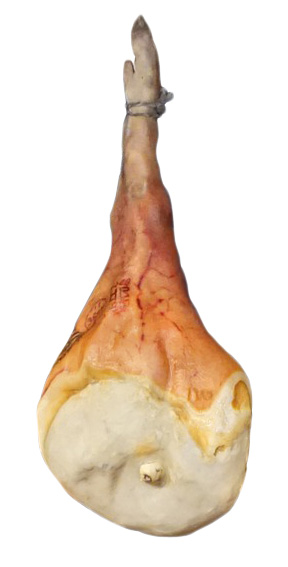

Pre-curing room
We have developed a revolutionary ventilation system for this equipment: the air is distributed into the room through two ducts mounted on the side walls, complete with conical nozzles, properly dimensioned for this purpose. A linear actuator and damper system continuously regulate flow of air into the two inlet ducts in order to obtain a precise flow of air that moves constantly within the room and ensures a better drying of the critical “best end” portion of the meat. It is also possible to add intermediate stops and to decide their duration. Suction ducts are mounted to the ceiling where air flow is controlled by micro-adjusting valves. This kind of system is designed to operate at a low relative humidity, to obtain a high dehydration of the ham at low temperature, thus preventing bacteria from developing and allowing the salt to penetrate into the heart of the raw ham. This is the most delicate and important phase. The pre-curing period varies from 2 to 3 weeks according to the type of ham.

Drying room
This stage varies from 1 to 2 weeks and allows to increase the internal temperature of the product in order to begin enzymatic processes.

Ageing room
The ageing equipment is designed to maintain temperature and control of relative humidity at such a level in order to allow the product to develop its typical flavour.

Energy savings
Heat recovery: our system allows to recover the total condensation heat transferred during the refrigeration cycle. Therefore, when the post-heating demand coincides with requirement for cold, there is hardly any need to use external heating sources. Furthermore, hot water around 40 – 45°C can be produced with a desuperheater (optionally available) which can be used for other processing systems as well as other plant needs.
Enthalpy: the enthalpy system utilizes the dehumidifying power of outside air for as long as possible. Our system is based on algorithms that allow to use outside air even when one of the specific values (temperature and relative humidity) seems far from the required values.
Economizer: in systems with an independent refrigeration unit, there is a subcooling system that guarantees a refrigeration capacity that is 15 – 18% greater than the absorbed electrical potential.
High efficiency motors (IE2 – IE3): increase the system’s output, reducing electrical consumption.
Inverter: frequency regulators, installed on the motor of centrifugal fans and/or compressors, that increase or reduce their rpm in order to improve their efficiency if process and loading conditions change.
Direct coupling motor/fan: this particular technical solution, combined with the use of an inverter, allows for a reduction in the system’s electrical consumption, optimizing its regulation.
Modulation of cooling and heating valves: to improve system performance in relation to the actual needs of the product during the various phases of maturation maturing.
Hot gas defrost system: allows to defrost the cooling coil better and more quickly, which consequently saves energy.
 Salami
Salami
Better fermentation control
Thanks to the combination of the installed cooling and heating power, it is possible to remove a noticeable amount of water from the product during the first hours of the fermenting process even at relatively low temperatures. In this way, water activity is reduced, fermentation is controlled, and negative effects from acidity are prevented.

Uniform shrinkage
The distribution of air inside the room must be as uniform as possible in all individual areas in order to obtain a homogeneous product. For this reason, as the result of the technical experience that we have acquired over the course of time, we have designed different air distribution systems according to the loading system used:
- “Turbo” systems, in which the air is sent into the room by two side wall ducts equipped with special conical nozzles, and air is returned through ceiling ducts with micro-adjusting valves. Even for equipment taller than 4 meters it is possible to control air quality (temperature and relative humidity) inside the room with a probe (optional) placed in the inlet duct, rather than using a system that inverts air circulation, in which the inlet ducts are also return ducts and vice versa;
- equipment with circular shape ducts, in which air is distributed with ceiling inlet ducts through a circular section and properly dimensioned holes. Air is returned through grids placed directly on the air treatment unit, or through air return ducts;
- systems with blower walls in which the air is distributed via two walls, powered by a treatment unit which can alternate the supply and return of air flow. In this way, the product enters into contact with a suitable horizontal air flow.

Computerized system
Our computerized control and management system, in addition to monitoring temperature and relative humidity, allows:
- to set predefined programmes;
- to control the fluid temperature, optimizing shrinkage;
- to record the graphical trending of different variables and display on a single screen (temperature, relative humidity, etc.);
- to verify the exact progression of the entire maturing process.
Furthermore, to allow for various functions to be centrally supervised, we have designed a software program for this purpose that allows to monitor and manage system alarms, to collect and graphically displayed the rooms’ individual data, remote programming, remote support, and automatic centralised control for better management of energy consumption.
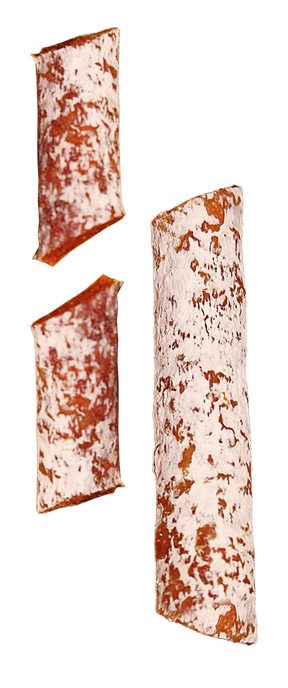
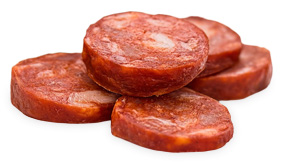
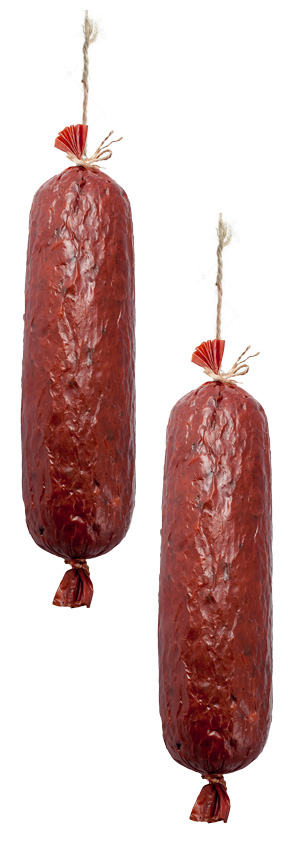

Minimal risk of crust formation
The risk of crust formation is practically eliminated because the equipment is controlled by the moisture released by the product. The working phases during which the product’s surface is dried are alternated with resting phases that allow it to “wake up”, allowing moisture from inside of the product to be released.

Air regulation
The system offered by Travaglini consists of a T-shaped duct, in which is installed an electric actuator, permitting the movement of two opposed blade dampers. Compared with simpler and inaccurate systems with flag dampers and circular actuators, this solution offers the advantage of gradually modulating the air flow. In addition to this, the new generation linear actuator (also with encoder), controlled by our programmable electrical card, allows:
- to regulate the room’s transverse cross-flow speed, in order for air to flow over the product more uniformly;
- to regulate actuator speed, in order to allow the air to fill the inlet ducts correctly and uniformly, achieving the same air quantity for all nozzles;
- to adjust the actuator extension range, optimizing air distribution according to the width of the room;
- to make one or more intermediate stops of the air flow within the room, which can be programmed directly in our computerized control unit which manages the system.

Energy savings
Heat recovery: our system allows to recover the total condensation heat transferred during the refrigeration cycle. Therefore, when the post-heating demand coincides with requirement for cold, there is hardly any need to use external heating sources. Furthermore, hot water around 40 – 45°C can be produced with a desuperheater (optionally available) which can be used for other processing systems as well as other plant needs.
Enthalpy: the enthalpy system utilizes the dehumidifying power of outside air for as long as possible. Our system is based on algorithms that allow to use outside air even when one of the specific values (temperature and relative humidity) seems far from the required values.
Economizer: in systems with an independent refrigeration unit, there is a subcooling system that guarantees a refrigeration capacity that is 15 – 18% greater than the absorbed electrical potential.
High efficiency motors (IE2 – IE3): increase the system’s output, reducing electrical consumption.
Inverter: frequency regulators, installed on the motor of centrifugal fans and/or compressors, that increase or reduce their rpm in order to improve their efficiency if process and loading conditions change.
Direct coupling motor/fan: this particular technical solution, combined with the use of an inverter, allows for a reduction in the system’s electrical consumption, optimizing its regulation.
Modulation of cooling and heating valves: to improve system performance in relation to the actual needs of the product during the various phases of maturation maturing.
Hot gas defrost system: allows to defrost the cooling coil better and more quickly, which consequently saves energy.
 Smoked Products
Smoked Products
Better fermentation control
Thanks to the combination of the installed cooling and heating power, it is possible to remove a noticeable amount of water from the product during the first hours of the fermenting process even at relatively low temperatures. In this way, water activity is reduced, fermentation is controlled, and negative effects from acidity are prevented.

Minimal risk of crust formation
The risk of crust formation is practically eliminated because the equipment is controlled by the moisture released by the product. The working phases during which the product’s surface is dried are alternated with resting phases that allow it to “wake up”, allowing moisture from inside of the product to be released.

Air regulation
The system offered by Travaglini consists of a T-shaped duct, in which is installed an electric actuator, permitting the movement of two opposed blade dampers. Compared with simpler and inaccurate systems with flag dampers and circular actuators, this solution offers the advantage of gradually modulating the air flow. In addition to this, the new generation linear actuator (also with encoder), controlled by our programmable electrical card, allows:
- to regulate the room’s transverse cross-flow speed, in order for air to flow over the product more uniformly;
- to regulate actuator speed, in order to allow the air to fill the inlet ducts correctly and uniformly, achieving the same air quantity for all nozzles;
- to adjust the actuator extension range, optimizing air distribution according to the width of the room;
- to make one or more intermediate stops of the air flow within the room, which can be programmed directly in our computerized control unit which manages the system.

Cleaning system
An automatic or manual cleaning system allows for a perfect cleaning of the centrifugal fan, modulating dumpers, filter-trap, supply ducts (equipped with openings) and return ducts (that can be opened).

Computerized system
Our computerized control and management system, in addition to monitoring temperature and relative humidity, allows:
- to set predefined programmes;
- to control the fluid temperature, optimizing shrinkage;
- to record the graphical trending of different variables and display on a single screen (temperature, relative humidity, etc.);
- to verify the exact progression of the entire maturing process.
Furthermore, to allow for various functions to be centrally supervised, we have designed a software program for this purpose that allows to monitor and manage system alarms, to collect and graphically displayed the rooms’ individual data, remote programming, remote support, and automatic centralised control for better management of energy consumption.
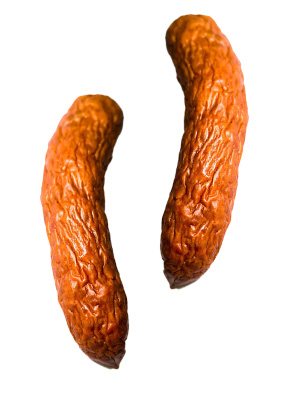
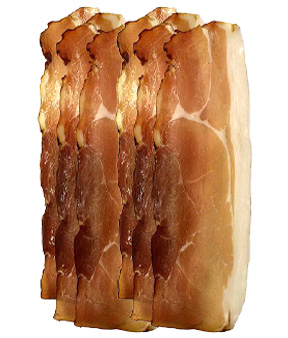
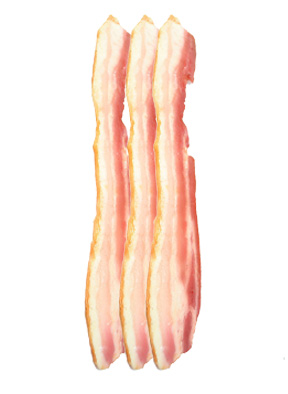

Less air pollution
Reduction of air pollution is guaranteed through a programmable smoke recycling system inside the room and through a special filter-trap that captures the tar content of smoke before it enters the smokehouse.
Our equipment have an optional by-pass device with dampers that prevents the passage of smoke through the smoking cabinet.
This guarantees that the equipment are more efficient and the costs of coil cleaning are lower.
Moreover, it is possible to request specific filters/purifiers that can be installed on chimneys, in order to reduce air pollution.

Uniform shrinkage
The distribution of air inside the room must be as uniform as possible in all individual areas in order to obtain a homogeneous product. For this reason, as the result of the technical experience that we have acquired over the course of time, we have designed different air distribution systems according to the loading system used:
- “Turbo” systems, in which the air is sent into the room by two side wall ducts equipped with special conical nozzles, and air is returned through ceiling ducts with micro-adjusting valves. Even for equipment taller than 4 meters it is possible to control air quality (temperature and relative humidity) inside the room with a probe (optional) placed in the inlet duct, rather than using a system that inverts air circulation, in which the inlet ducts are also return ducts and vice versa;
- equipment with circular shape ducts, in which air is distributed with ceiling inlet ducts through a circular section and properly dimensioned holes. Air is returned through grids placed directly on the air treatment unit, or through air return ducts;
- systems with blower walls in which the air is distributed via two walls, powered by a treatment unit which can alternate the supply and return of air flow. In this way, the product enters into contact with a suitable horizontal air flow.

Energy savings
Heat recovery: our system allows to recover the total condensation heat transferred during the refrigeration cycle. Therefore, when the post-heating demand coincides with requirement for cold, there is hardly any need to use external heating sources. Furthermore, hot water around 40 – 45°C can be produced with a desuperheater (optionally available) which can be used for other processing systems as well as other plant needs.
Enthalpy: the enthalpy system utilizes the dehumidifying power of outside air for as long as possible. Our system is based on algorithms that allow to use outside air even when one of the specific values (temperature and relative humidity) seems far from the required values.
Economizer: in systems with an independent refrigeration unit, there is a subcooling system that guarantees a refrigeration capacity that is 15 – 18% greater than the absorbed electrical potential.
High efficiency motors (IE2 – IE3): increase the system’s output, reducing electrical consumption.
Inverter: frequency regulators, installed on the motor of centrifugal fans and/or compressors, that increase or reduce their rpm in order to improve their efficiency if process and loading conditions change.
Direct coupling motor/fan: this particular technical solution, combined with the use of an inverter, allows for a reduction in the system’s electrical consumption, optimizing its regulation.
Modulation of cooling and heating valves: to improve system performance in relation to the actual needs of the product during the various phases of maturation maturing.
Hot gas defrost system: allows to defrost the cooling coil better and more quickly, which consequently saves energy.
 Cheese
Cheese
Maturing room
The maturing phase is very important for the production of fresh and semi-fresh foods; its purpose is to allow the development of aroma and the taste of the cheese. Maturing rooms are composed by Sani-system in stainless steel with rounded corners, in order to allow for adequate sanitation. Travaglini systems are designed to guarantee correct thermo hygrometer readings in each part of the cell, controlled gas creation (ammonia and carbon dioxide), and uniform air distribution through textile ducts in order to avoid excessive drying of the product’s surface.

Conditioning rooms
Travaglini has always focused on respecting ideal thermo hygrometric parameters in production, manufacturing and packaging areas. The need to sanitise these areas can also be considered with this goal. An example might be air treatment units, developed with technical specifications, such as circular angles, inclined planes, or washable materials, which allow for easy cleaning of the various components to remove dirt and residues.

Computerized system
Our computerized control and management system, in addition to monitoring temperature and relative humidity, allows:
- to set predefined programmes;
- to control the fluid and the environmental temperature;
- to record the graphical trending of different variables and display on a single screen (temperature, relative humidity, etc.);
- to verify the exact progression of the entire maturing process.
Furthermore, to allow for various functions to be centrally supervised, we have designed a software program for this purpose that allows to monitor and manage system alarms, to collect and graphically displayed the rooms’ individual data, remote programming, remote support, and automatic centralised control for better management of energy consumption.
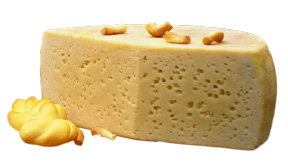
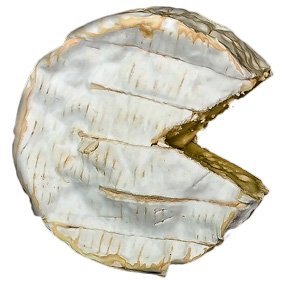
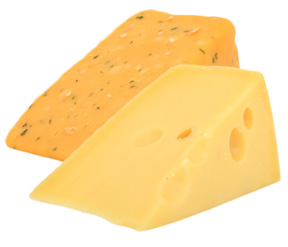

Ageing room
Depending on the duration of this phase, it’s possible to talk about medium (3 – 6 months) or long (more than 6 months) seasoning. Travaglini aging equipment maintain temperature and relative humidity so that they fall within such values in order to allow the development of the product’s characteristic aroma. Air is distributed into the room through ducts, which allow to achieve an uniform air flow on the product, controlled in function of the desired shrinkage. Depending on the type of cheese or loading, it is possible to offer different solutions: equipment with round textile ducts, blowing walls or static exchangers. Normally cheeses are placed on special stackable racks or hung.

Energy savings
Heat recovery: our system allows to recover the total condensation heat transferred during the refrigeration cycle. Therefore, when the post-heating demand coincides with requirement for cold, there is hardly any need to use external heating sources. Furthermore, hot water around 40 – 45°C can be produced with a desuperheater (optionally available) which can be used for other processing systems as well as other plant needs.
Enthalpy: the enthalpy system utilizes the dehumidifying power of outside air for as long as possible. Our system is based on algorithms that allow to use outside air even when one of the specific values (temperature and relative humidity) seems far from the required values.
Economizer: in systems with an independent refrigeration unit, there is a subcooling system that guarantees a refrigeration capacity that is 15 – 18% greater than the absorbed electrical potential.
High efficiency motors (IE2 – IE3): increase the system’s output, reducing electrical consumption.
Inverter: frequency regulators, installed on the motor of centrifugal fans and/or compressors, that increase or reduce their rpm in order to improve their efficiency if process and loading conditions change.
Direct coupling motor/fan: this particular technical solution, combined with the use of an inverter, allows for a reduction in the system’s electrical consumption, optimizing its regulation.
Modulation of cooling and heating valves: to improve system performance in relation to the actual needs of the product during the various phases of maturation maturing.
Hot gas defrost system: allows to defrost the cooling coil better and more quickly, which consequently saves energy.
 Fish
Fish
Salting room
In this phase the product is laid horizontally and completely covered with salt. The equipment is composed by ceiling mounted air exchangers and convectors made of ABS with conveyors that contain a hot water coil, installed in the centre or on the side walls of the room.

Less air pollution
Reduction of air pollution is guaranteed through a programmable smoke recycling system inside the room and through a special filter-trap that captures the tar content of smoke before it enters the smokehouse.
Our equipment have an optional by-pass device with dampers that prevents the passage of smoke through the smoking cabinet.
This guarantees that the equipment are more efficient and the costs of coil cleaning are lower.
Moreover, it is possible to request specific filters/purifiers that can be installed on chimneys, in order to reduce air pollution.

Uniform shrinkage
As a result of the technical experience that we have acquired over the course of time, we have designed different air distribution systems according to the loading systems used. In the fish industry, for products that are loaded horizontally, air is distributed through vertical circular ducts, complete with proportionally-sized nozzles. The airflow within the room is continuously regulated in order to obtain a continuously moving precise airflow that moves from right to left and vice versa. In this way, every duct functions as both air supply and air return.

Computerized system
Our computerized control and management system, in addition to monitoring temperature and relative humidity, allows:
- to set predefined programmes;
- to control the fluid temperature, optimizing shrinkage;
- to record the graphical trending of different variables and display on a single screen (temperature, relative humidity, etc.);
- to verify the exact progression of the entire maturing process.
Furthermore, to allow for various functions to be centrally supervised, we have designed a software program for this purpose that allows to monitor and manage system alarms, to collect and graphically displayed the rooms’ individual data, remote programming, remote support, and automatic centralised control for better management of energy consumption.
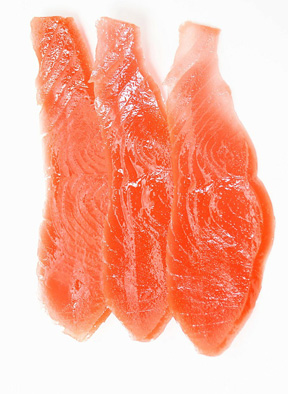
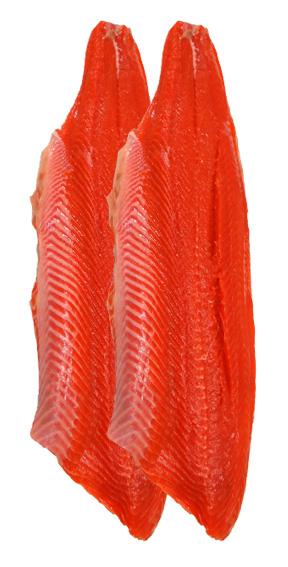
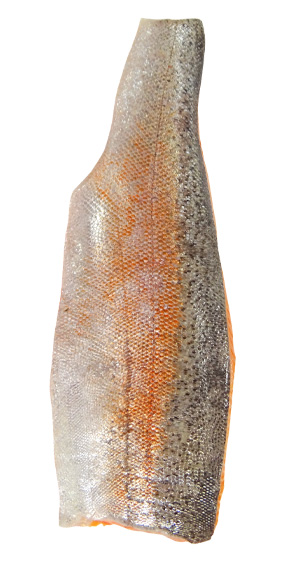

Drying and smoking room
The aim of this phase is to make the salt penetrate while drying the product at the same time. In this way, the salt enters inside the cell via osmosis, causing the water leaving, which must be removed quickly in order to avoid problems caused by bacteria. Equipment with round vertical ducts was also designed to satisfy customers who dry products via horizontal loading. The drying phase is very important and can be carried out at a range of different temperatures.

Minimal risk of crust formation
The risk of crust formation is practically eliminated because the equipment is controlled by the moisture released by the product. Fish filets come into contact with air flow that allows to perfectly dehydrated with the desired shrinkage the surface. The processing phases during which the product’s surface is dried are alternated automatically with resting phases that allow it to “wake up”.

Energy savings
Heat recovery: our system allows to recover the total condensation heat transferred during the refrigeration cycle. Therefore, when the post-heating demand coincides with requirement for cold, there is hardly any need to use external heating sources. Furthermore, hot water around 40 – 45°C can be produced with a desuperheater (optionally available) which can be used for other processing systems as well as other plant needs.
Enthalpy: the enthalpy system utilizes the dehumidifying power of outside air for as long as possible. Our system is based on algorithms that allow to use outside air even when one of the specific values (temperature and relative humidity) seems far from the required values.
Economizer: in systems with an independent refrigeration unit, there is a subcooling system that guarantees a refrigeration capacity that is 15 – 18% greater than the absorbed electrical potential.
High efficiency motors (IE2 – IE3): increase the system’s output, reducing electrical consumption.
Inverter: frequency regulators, installed on the motor of centrifugal fans and/or compressors, that increase or reduce their rpm in order to improve their efficiency if process and loading conditions change.
Direct coupling motor/fan: this particular technical solution, combined with the use of an inverter, allows for a reduction in the system’s electrical consumption, optimizing its regulation.
Modulation of cooling and heating valves: to improve system performance in relation to the actual needs of the product during the various phases of maturation maturing.
Hot gas defrost system: allows to defrost the cooling coil better and more quickly, which consequently saves energy.
 Thawing Systems
Thawing Systems
Points of strength of our equipment
- air treatment unit, hot and cold coils, fan, inlet and return ducts in stainless steel;
- processes controlled by a microprocessor via temperature and relative humidity sensors in the room. Probes inserted in the core and on the surface of the product are used to monitor temperatures and changes in environmental conditions in real time, and to consequently regulate the functioning of the system;
- heating/humidification system with saturated steam in the room to increase efficiency in terms of the product’s heat transfer coefficient uniformity of treatment;
- constant microbial content throughout the entire process through the presence of steam;
- microbiological product safety and a hygienic process that guarantee product shelf life;
- adjustable temperature from -5°C/+20°C and relative humidity up to 95 – 100%;
- at the end of the cycle our equipment works as a refrigeration room to preserve thawed products;
- reduced shrinkage, compared to other thawing systems;
- reduced loss of sarcoplasmic (water soluble) proteins;
- low energy cost;
- high loading capacity (over 1000 kg/mq);
- none of the disadvantages of traditional immersion thawing systems such as excessive use of water and waste water draining.
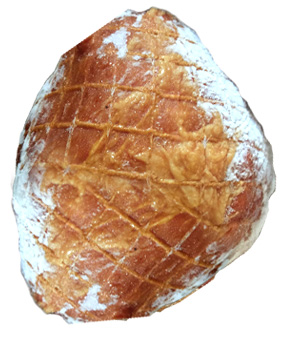
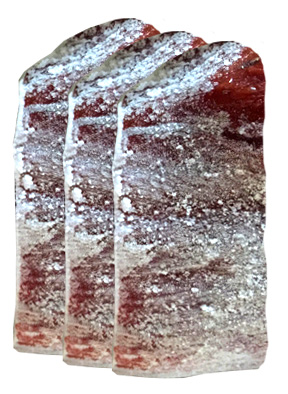
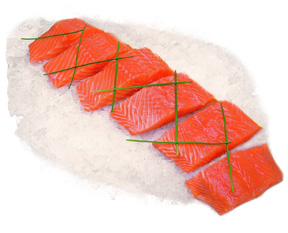

Uniform Shrinkage
In “Turbo” equipment, air distribution is controlled by two side wall ducts equipped with proportionally dimensioned conical nozzles. A linear actuator and damper system continuously regulate flow of air into the two inlet ducts in order to obtain a precise flow of air that moves constantly within the room. Air return is controlled by ceiling ducts equipped with micro-adjusting valves.

Computerized system
Our computerized control and management system, in addition to monitoring temperature and relative humidity, allows:
- to set predefined programmes;
- to control the fluid temperature, optimizing shrinkage;
- to record the graphical trending of different variables and display on a single screen (temperature, relative humidity, etc.);
- to verify the exact progression of the entire maturing process.
Furthermore, to allow for various functions to be centrally supervised, we have designed a software program for this purpose that allows to monitor and manage system alarms, to collect and graphically displayed the rooms’ individual data, remote programming, remote support, and automatic centralised control for better management of energy consumption.
 Clean Rooms
Clean Rooms
Definition of clean room
A clean room is a room in which the concentration of airborne particles is controlled. These rooms are built for minimizing the introduction, generation, and retention of pollutant particles within. The contamination of products due to dust, mold, and airborne particles reduces the quality and the shelf-life of the products themselves.

Product protection
Protecting products from contamination by harmful airborne particles means avoiding that they come into contact with the air itself. This is not possible during all stages of production and is extremely difficult at the same time. However, the concept of protection can be interpreted in a different way: not to isolate the product from the surrounding ambient, but instead to place it in a high quality environment, with controlled hygienic conditions, and with particularly pure air to promote protection of the product.

Filters
For each installation class, filters with different efficiency levels are used. Air filtration takes place progressively; lower-protection filters are placed before those that have a higher protection. Progressive air filtration prevents damage to the higher-protection filters and their rapid contamination.

Structure and operation of a clean room
A basic feature of clean rooms is that they are often enclosed in areas of limited size which are optimized for production requirements. Air distribution inside a clean room can be implemented in different ways, and this, together with the different grades of filtration, determines the level of protection against product contamination. Here you can find possible methods of air distribution:
- unidirectional vertical flow, filters are placed in the ceiling and the air is recovered from the lower parts of the room or from the perforated flooring; in this case the clean working area is located in the upper part of the room;
- unidirectional horizontal flow, the air enters from wall filters and is recovered by localized grates; in this case, the clean work area is located between the filters that generate the flow and the first source of contamination;
- non-unidirectional flow, the clean working area is the whole room;
- mixed flow, this is a situation in which unidirectional and non-unidirectional flows coexist.
Therefore, looking at this classification we understand how choosing and properly placing filters is fundamental in the design of a clean room.

Connection between different working areas
For each installation class, filters with different efficiency levels are used. Air filtration takes place progressively; lower-protection filters are placed before those that have a higher protection. Progressive air filtration prevents damage to the higher-protection filters and their rapid contamination.
- openings between the various environments with controlled atmosphere must be limited as much as possible;
- entries and exits must be made using “Air locks” in order to minimize contamination, and furthermore, to maintain the differential pressures between the various environments.
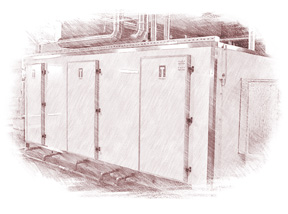
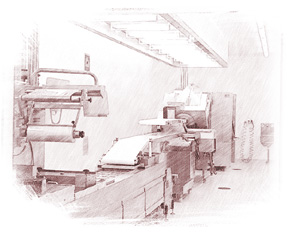
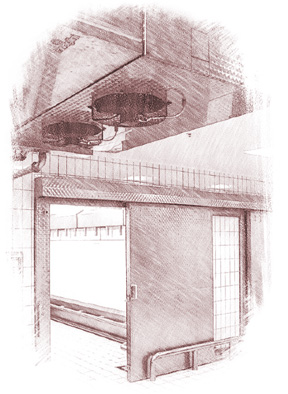

Cause of impurities
The following are the principal causes of air contamination:
- people that are the principal vehicle of contamination and with one small movement can release several million of particles of various sizes;
- products, especially when packaged or left in dust;
- production machinery and liquids (pneumatic equipment with open drains, lubricating oils, condensation drops, drains without traps, etc.);
- production, cleaning, and disinfection processes;
- biological contamination through mold, yeast and bacteria present in the air.

Classification of cleaning rooms
In the table below you can find a classification of air purity (filtration grade) in conditioned rooms according to the Federal Standard 209 E, Federal Standard 290 D and ISO 14644-1 that are taken as reference classifying rooms. Moreover, since the introduction of Fed.Std.209D, it has been specified that the conditions that must be tested in order to establish environmental contamination classes are:
- as built clean room;
- at rest clean room;
- operational clean room.

Working environment characteristics
limited dimensions in order to guarantee a healthy work environment work areas must be placed as far as possible from potential sources of contamination the production cycle must flow from the least sterile to the most sterile room elimination/reduction of turbulence within the clean rooms easy access to all areas of the clean room for cleaning accessories that comply with international safety and hygiene regulations.

Environmental parameters in clean rooms
The most important environmental parameters are those that must be kept under control for the product’s quality, packaging, and waste material, energy consumption, machine functionality, and last but not least, the workers’ comfort. These parameters are:
- temperature and humidity: humidity control, besides being fundamental for product quality, is also of great importance for problems in relation to corrosion, condensation on work surfaces, and the reduction of electrostatic charges;
- differential pressures: all rooms must be kept at static pressures that are sufficiently higher than atmospheric pressure in order to avoid any type of infiltration; any expulsion of air from the room must be counterbalanced by new air input in order to maintain the environmental pressure value;
- lighting: the level of lighting, its uniformity, and the colour of the light must be controlled;
- noise and vibration: can be dangerous both for the workers and for the equipment itself.

Air treatment systems
Working phases:
The equipment, besides its normal function as an air conditioning unit, provides the expulsion of humid air generated while the work environment is being washed. The air treatment unit in this phase provides the introduction of hot air to facilitate the drying of surfaces and equipment.
